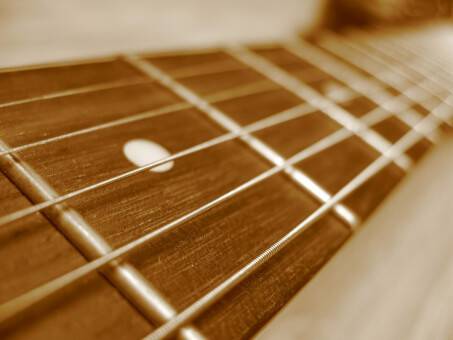One of the first things to do when you want to master the jazz language is to learn scales and modes. You have to memorise the fingerings, memorise their names, how they are built. You must be able to make the difference between different scales and modes as the major scale, the dorian mode, the aeolian mode (natural minor scale), the mixolydian mode, the symmetric scales as augmented or diminished scales. You need to recognise them by ear and also visually.
Learning scales can be confusing in the long run and seems a never ending. The purpose of this article is not to make the difference between all this scales, but to suggest some tips to work out on the guitar while developing your musical ear, your theoretical knowledge and obviously your technique practice.
Determine your favourite scale
To begin with, just choose the scale you are comfortable with, and I think the major scale is a good starting point, surely the most common and the easiest to learn. It would before appropriate to remember how the major scale is built.
The major scale, so called the ionian mode, is the first of the seven greek modes. It has exactly seven notes.
| C Ionian mode | C | D | E | F | G | A | B |
| Formula | 1 | 2 (9) | 3 | 4 (11) | 5 | 6 (13) | 7 |
| Intervals | W | W | H | W | W | W | H |
(W = whole step ; H = half step)
As it is shown in the chart above the major scale is made up of a root (1), a second (2), a major third (3), a perfect fourth (4), a perfect fifth (5), sixth (6) and a major seventh (7). It is very important to know how each scale is built. You can also memorize the order of the whole steps and half-steps which is W-W-H-W-W-W-H.
How to develop scales on guitar ?
Normally, when you learn a scale for the first time, you just play the notes in the order, one by one, from the lowest to the highest and inversely. This is a logical approach to hear correctly a scale. In so doing you don’t really enrich your playing and your musical ear, so here are some ideas to develop your scales.
All the following examples are based on the major scale. Notice that you can also apply these working trips to the scale of your choice.
4 directions
The first technique is called “4 direction”. It consists of playing different scales in ascending and descending movements and mixing these two directions (up and down) together. The first direction is to play the scales from the lowest note to the highest, in other words you have to play them in ascending movements (up & up).

The second direction is down and down

The third direction is Down & up

The fourth direction is up and down

Just play the major scale in twelve keys respecting these four exercises.
The circle of fourths
Knowing the circle of fourths provides the possibility to play all the notes of the western music. Each note resolves to another one a fourth above it. In other words, by following the circle of fourths, you play all the notes separated from each other by a fourth (five semitones).
Playing scales through the circle of fourths should be a part of your training. It is a great way to explore your guitar fretboard. Notice that each note of the circle can be the root of a scale. As shown on the picture , you have to play the major scale (or the scale of your choice) following this order : C – F – Bb – Eb – Ab – Db – F# – B – E – A – D – G

Playing intervals
Another way to develop scales is to use intervals. You surely know that an interval is the distance between two notes. The main intervals are : seconds, thirds, fourths, fifths, sixths, sevenths and octaves. They can be “perfect” (P), “minor” (m), “major” (M), “augmented” (A) or “diminished” (d).
Let’s take an example with the C major scale. The C major scale contains the seven following notes : C-D-E-F-G-A-B. By playing it in intervals of fifths, this would give C-G ; D-A; E-B; F-C; G-D; A-E and so on.
In the example below, the C major scale is played in thirds, in a down and up movement.

Triads and tetrads
The last trick to develop scales is to use triad and tetrad arpeggios. A triad is a set of three notes which, when they are stacked in thirds, forms a chord. By playing these notes one by one, you get arpeggios. There are four main types of triads :
- Minor : 1-b3-5
- Major : 1-3-5
- Diminished : 1-b3-b5
- Augmented : 1-3-#5
To find triads of any scale, it is simple. Just take the 1st, 3rd and 5th notes from each tone of the scale of you choice. Let’s take an example with the C major scale one again. Each triad is played from the lowest to the highest note (up movement).
You can do the same work by using tetrads. To build a tetrad you just have to add one note more to the previous triad.
- Minor seventh : 1-b3-5-b7
- Major seventh : 1-3-5-7
- Dominant seventh – 1-3-5-b7
- Diminished seventh: 1-b3-b5-bb7
- Augmented seventh : 1-3-#5-7
Conclusion
Now try to apply these guidelines to all the scales that you use to play, taking care not to become a “scale player”.
About the author
Stef Ramin is the webmaster, guitar teacher and author on jazz-guitar-licks.com, jazz guitar lessons and eBooks online to learn to play jazz guitar.
More Guitar Lessons @ The Blogging Musician

Leave a Reply